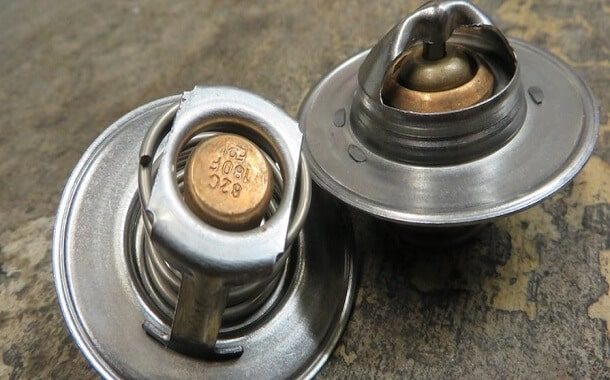
Not getting enough heat in the interior is mainly a comfort issue, but overheating can cause serious engine damage and shouldn’t be ignored.

When this happens, these vital components are no longer able to do their job as they should. Excessive heat can cause things like hoses, gaskets and even metal thermostat housings to warp and lose their original shape. Overheating can cause serious damage to the valve as well as the thermostat housing and the hoses and gaskets that are a part of your car’s cooling system. If your vehicle has ever overheated, you will likely need to get a new thermostat.
COST TO REPLACE COOLANT THERMOSTAT PRO
Because these symptoms can be caused by other problems, the entire cooling system - from main components to small gaskets - should be inspected by a pro before deciding to replace the thermostat. A faulty thermostat may also trigger the check engine light.
COST TO REPLACE COOLANT THERMOSTAT FULL
If it sticks in the open position, the coolant will constantly circulate through the engine and radiator, which can prevent the engine from reaching full operating temperature (and full efficiency) and reduce heat output from the climate system.Īmong the signs that a thermostat isn’t working are an engine that overheats or runs hotter than usual, or a cabin heater that fails to produce sufficient warm air. If it sticks in the closed position, that traps coolant in the engine so that it overheats. If you need to have your radiator or any gaskets or hoses replaced in your cooling system, you may also want to ask your mechanic about whether you should replace your thermostat at the same time.Īside from this type of preventive maintenance, a thermostat doesn’t need to be replaced unless it stops opening and closing when it’s supposed to. That’s particularly true if the upper hose is being removed, as that’s where many thermostats are located. However, if you’re having other cooling system maintenance performed, such as replacing the coolant and/or radiator hoses on a vehicle that’s been in service for several years, it could be a good idea to replace the thermostat at the same time for peace of mind. Indeed, if it appears to be working, there probably isn’t a need for a new thermostat. When to Replace Your Thermostatīecause they are so simple, thermostats generally do not go bad with age. The valve is opened and closed with a spring, piston or another thermally controlled device.

This ensures that the coolant in your engine stays within a specific temperature range regardless of the outside temperature. Its job is to regulate the amount of coolant that is recirculated back into the engine and how much is cooled via the radiator prior to being recirculated. It’s a valve located in your car’s cooling system.

Your car’s thermostat is a vital component that is actually pretty simple. Related: Air-Conditioner Condenser: What You Need to Know What Does a Thermostat Do? Thermostats generally last for years - even for the lifetime of a vehicle - so why bother changing it? Does a car thermostat need to be changed as part of normal maintenance? Let’s take a closer look. Unless an engine overheats or fails to reach normal operating temperature after being driven for several miles, the thermostat that regulates the flow of coolant is probably working properly. CARS.COM - A car thermostat is responsible for preventing your engine from overheating.


 0 kommentar(er)
0 kommentar(er)
